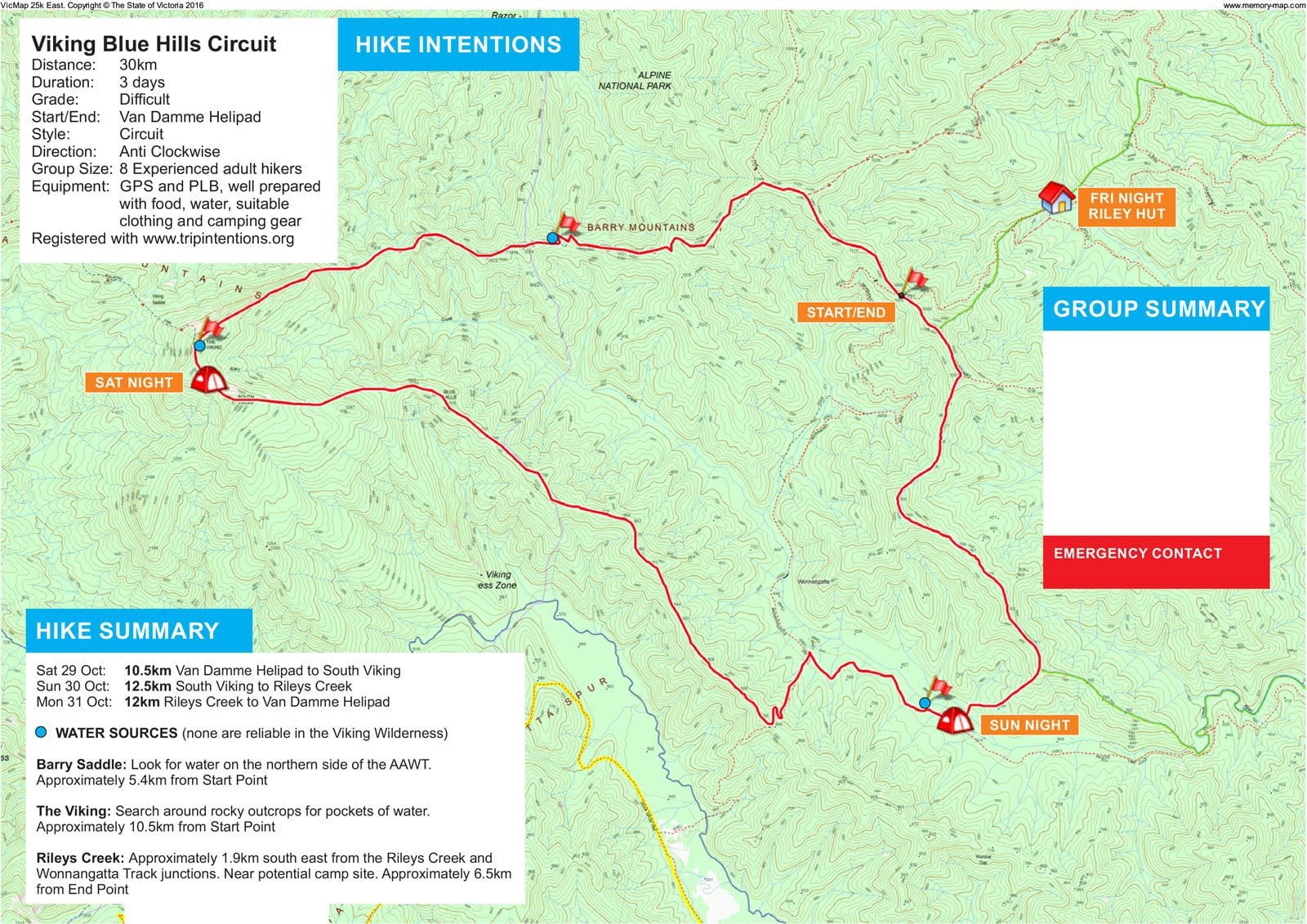Heading out for a hike in remote wilderness or challenging terrain? Whether you’re facing unpredictable weather or rugged trails, leaving a detailed trip plan and map with a trusted contact is essential. This step could be a lifeline, ensuring swift rescue efforts if needed.
Creating a comprehensive trip plan involves more than just marking a route on a map. It’s about providing critical information that can guide rescuers directly to you. Here’s a breakdown of essential details to include:
Detailed Route Information:
- Provide both a physical, and digital map of your intended route. If using a paper map, ensure it is waterproofed. Take pictures of your map with your phone as a backup.
- Include precise start and end points, planned campsites, and potential emergency extraction points.
- Mark known or potential water sources along the trail.
- Note the trail’s distance, estimated duration, elevation gain (grade), and direction.
- Also include your planned return time.
Group and Contact Information:
- List the names, ages, and mobile phone numbers of everyone in your hiking group.
- Designate a reliable emergency contact person who understands your hiking plans and knows what to do if you don’t return as scheduled. Ensure they understand they should contact emergency services if you are overdue.
- Make sure that this person understands the planned return time.
Trip Specifics:
- Specify the dates of your hike.
- Provide a summary of your group’s experience level and the equipment you’re carrying.
- Detail any anticipated terrain or weather challenges.
Technology and Backup:
- If using a GPS device, satellite messenger, or personal locator beacon (PLB), include this information in your plan.
- If using a phone app that shares location, make sure your emergency contact has access to that information.
Vehicle Information:
- If driving to the trail head, leave a copy of your trip plan in a spot that can be easily found by emergency services, such as on the dashboard or drivers seat.
Key Safety Reminders:
- Complete a Trip Intentions Form. A trip intentions form provides a structured way to document all essential details of your hike. It ensures you don’t overlook critical information and creates a clear record for your emergency contact and potential rescuers.
- Always inform your designated emergency contact of any changes to your hiking plans.
- Before you leave, check the current trail, weather and bushfire conditions.
By taking these precautions, you significantly enhance your safety and provide peace of mind for yourself and your loved ones. Enjoy your hike, and stay safe!






